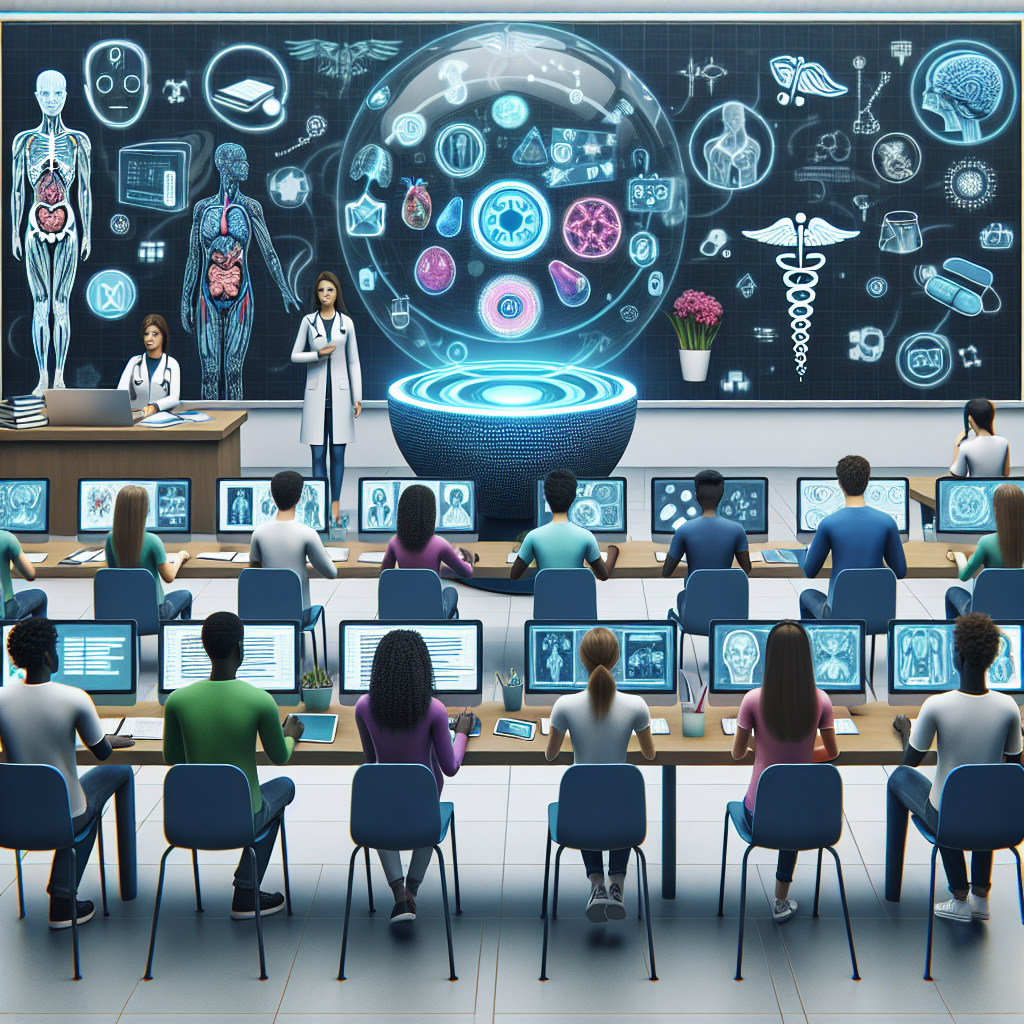Artificial intelligence (AI) is revolutionizing various industries, and the field of medical education is no exception. AI technologies are being increasingly integrated into medical education to enhance learning experiences, improve diagnostic skills, and provide personalized feedback to students. This article will explore the role of AI in medical education, its benefits and challenges, and the potential impact on future healthcare professionals.
Benefits of AI in Medical Education:
1. Personalized Learning: AI algorithms can analyze individual learning styles and preferences to provide personalized learning experiences for medical students. This helps to optimize the learning process and improve retention of information.
2. Real-time Feedback: AI-powered systems can provide instant feedback on medical students’ performance, allowing them to track their progress and identify areas for improvement. This real-time feedback can help students to enhance their diagnostic skills and clinical reasoning.
3. Simulation Training: AI technology enables the development of realistic medical simulations that replicate clinical scenarios. This allows students to practice and refine their skills in a safe and controlled environment, improving their clinical decision-making abilities.
4. Data Analysis: AI algorithms can analyze large volumes of medical data to identify patterns and trends, providing valuable insights for medical education. This data-driven approach can help educators to tailor curriculum content and teaching methods to meet the needs of students.
5. Virtual Assistants: AI-powered virtual assistants can provide students with on-demand access to information, resources, and guidance. These virtual assistants can answer questions, explain complex concepts, and assist students in their learning journey.
Challenges of AI in Medical Education:
1. Ethical Concerns: The use of AI in medical education raises ethical concerns around data privacy, bias in algorithms, and the potential for automation to replace human interaction. Educators must carefully consider these ethical implications when implementing AI technologies in the classroom.
2. Training and Integration: Educators and students may require training to effectively use AI technologies in medical education. Integrating AI into existing curricula and workflows can also pose challenges, requiring careful planning and coordination.
3. Cost and Accessibility: Implementing AI technologies in medical education may require significant investment in infrastructure, software, and training. Ensuring equitable access to AI tools for all students can be a challenge, particularly in resource-constrained settings.
4. Validation and Regulation: Ensuring the accuracy and reliability of AI algorithms used in medical education is essential to prevent misinformation and errors. Regulatory oversight and validation processes are necessary to maintain quality standards in AI-powered educational tools.
5. Impact on Traditional Teaching Methods: The introduction of AI in medical education may disrupt traditional teaching methods and require educators to adapt to new instructional approaches. Balancing the benefits of AI with the preservation of human-centered teaching practices is a key challenge.
FAQs:
1. How is AI used in medical education?
AI is used in medical education to personalize learning experiences, provide real-time feedback, facilitate simulation training, analyze data, and support virtual assistants. These applications help to enhance the learning process, improve diagnostic skills, and prepare students for clinical practice.
2. What are the benefits of AI in medical education?
The benefits of AI in medical education include personalized learning, real-time feedback, simulation training, data analysis, and virtual assistants. These benefits help to optimize the learning process, enhance clinical skills, and improve educational outcomes for students.
3. What are the challenges of AI in medical education?
Challenges of AI in medical education include ethical concerns, training and integration, cost and accessibility, validation and regulation, and the impact on traditional teaching methods. Educators must address these challenges to effectively implement AI technologies in medical education.
4. How can educators integrate AI into medical education?
Educators can integrate AI into medical education by providing training to students and faculty, developing curriculum content that incorporates AI tools, ensuring equitable access to AI technologies, and validating the accuracy and reliability of AI algorithms. Collaboration with industry partners and regulatory bodies can also support the integration of AI in medical education.
5. What is the future of AI in medical education?
The future of AI in medical education is promising, with continued advancements in technology driving innovation in teaching and learning. AI-powered tools will play a central role in preparing future healthcare professionals for the challenges of a rapidly evolving healthcare landscape, enhancing their clinical skills and improving patient outcomes.
In conclusion, AI is transforming the field of medical education by providing personalized learning experiences, real-time feedback, simulation training, data analysis, and virtual assistants. While the integration of AI poses challenges such as ethical concerns, training and integration, cost and accessibility, validation and regulation, and impact on traditional teaching methods, educators can address these challenges through careful planning and collaboration. The future of AI in medical education is bright, with continued advancements in technology driving innovation and improving educational outcomes for students.

